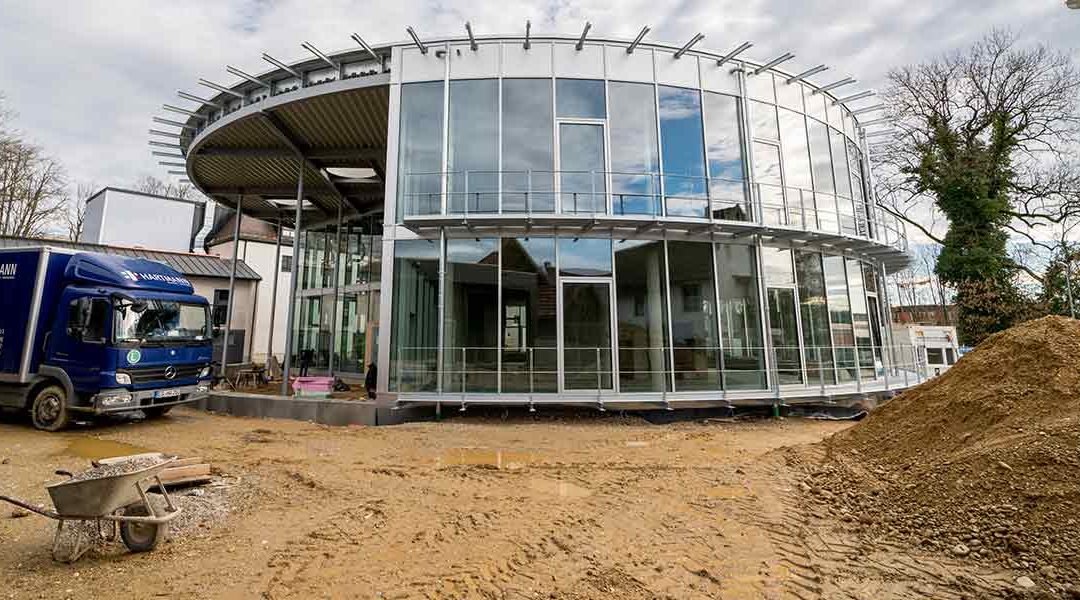Why software developers sometimes need a pressure differential measurement procedure. What that has to do with sound insulation and why the bosses like getting up at 6am.
Blow test. Blow test? Erm. Most people won’t have heard of it.
The term blower door test – to give it its proper name – goes some way to explaining what it is. Measuring the pressure differential determines the airtightness of a building. The process is used to detect leakage in the building envelope and to determine the air exchange rate.
Who needs this? The test is supposed to locate any defects in the building envelope at an early stage.
What does the measuring engineer do? For the pressure test, a calibrated electronic fan is placed in an open exterior door (entrance or balcony door) or window. A pressure differential of 50 Pa (pascal) is then built up. The blower builds up this pressure and at the same time determines the air changes per hour. The ratio between this volume and the building’s volume is the measurement of the tightness.
What values are expected? Typical air exchange rates resulting from the building tightness measurement are: 4 to 12 h−1 for leaky old buildings; 3 to 7 h−1 for new buildings without special attention; 1 to 2 h−1 for low-energy buildings and 0.1 to 0.6 h−1 for passive houses. Airtightness is particularly important in passive houses which is why an upper limit of 0.6 h−1 is stipulated (measured at 50 Pa).
Why is our management in a good mood despite having to get up at 6am on Sunday?
Our new MobiMedia building passed this test with flying colours.
Hannes Rambold, Board Member of MobiMedia AG: “We have achieved a value of 0.5. The surveyor and architect were impressed. This value means we are a passive house and can expect no draughts at all in the office. The surveyor confirmed that we will have optimal air quality and a feel-good atmosphere.”
It should also be noted that airtightness often improves sound insulation too.
The MobiMedia team is delighted and looking forward to the move and the new working environment.
